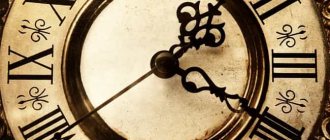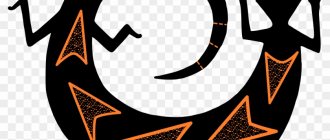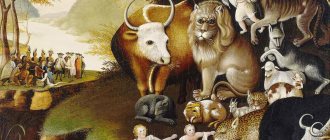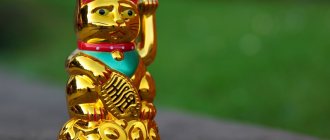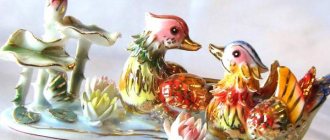The symbol in Feng Shui is of great importance, especially animal talismans. They are used everywhere. The reason for such constancy is easy to explain: they are faithful to the person who cares for them and values their presence. Chinese teaching does not insist on the mandatory presence of animals in the house, only at the request of a person. And not all of them can be kept, due to their size or other features. But a symbol in the form of a photo or figurine is welcome.
Among the variety of animal mascots, the monkey is important. It is a symbol of resourcefulness, luck and wisdom. It also represents talent, adaptability to different conditions, and the ability to remain oneself.
Feng Shui personifies the monkey as an animal that bestows good health and protection in business. Since the animal is capable of imitation, it deftly adapts to any circumstances. This means it can bring help in all sectors. The inhabitants of Egypt believed that this animal, more than others, had the ability to understand humans and their speech. And he learns new skills well too.
A popular symbol in Feng Shui is the three monkeys. Came from Buddhism, promotes the fight against evil, rejection, denial. After all, each of the monkeys openly shows its “position”: the first closes its eyes, the second closes its mouth, the third closes its ears. Thanks to the legend, these three monkeys are a symbol of countering denunciations and gossip with malicious intent. And being companions of the god Vajrayaksha, they are protectors from evil spirits and diseases.
The feng shui figurine of three monkeys has gained popularity not only in eastern countries, but also in western ones. And thanks to this, a song was born, where the chorus contains the following words: “I don’t hear anything, I don’t see anything, I won’t tell anyone anything.” It sounds like a call to have nothing to do with evil, to avoid by all possible means.
Monkey Time
Perhaps we should start by indicating the time when the Monkey rules. All animals of the Chinese calendar govern a time period of two hours. Every day from 15:00 to 17:00 it is Monkey time. Usually during these hours, calm arises or passions heat up to incredible limits. The reason for such extremes is that the strong metal of this demon freezes the space and energy of living beings or activates situations caused by the influence of the energies of fire and wood.
The month ruled by the Monkey is August. According to the Chinese calendar, it is the seventh, and according to the generally accepted calendar it is the eighth. In addition, the animals of the Chinese calendar rule over periods of time that last twelve months. Years of the Monkey: 1944, 1956, 1968, 1980, 1992, 2004, 2021, 2028. If a year is called, for example, the year of the red Monkey, like 2021, then this means that its heavenly trunk represents strong fire, and its earthly branch is strong metal - the main energy of the Monkey.
Need a newsletter? Test the modern delivery service for Viber messages, email and SMS, which stands out for its revolutionary drip automation and flexible tariffs.
Religious overtones
An offshoot of Tendai Buddhist thought, the monkey symbol reached Japanese lands through the Chinese Buddhist monk Saicho in the 8th century. Even then, three monkeys meant practical intelligence and boundless wisdom.
Indeed, Buddhism happily accepts and supports the wise saying from the mouth of Sanzaru: there is no need to notice the evil that is happening around, just as there is no need to commit it, to feed it, and then the path to Enlightenment will be cleaner and easier.
Moreover, figurines of monkeys are quite often used in Buddhist shrines. But it would be wrong to assume that they originate in the philosophy of the Buddha.
In fact, the three “zaru” go back to the Japanese cult of Koshin, which, in turn, “migrated” from the Chinese Tao religion. According to the Kosin belief, certain entities inhabit a person that watch over the owner.
If he cannot cope with internal evil, once every two months these entities find out the master’s secrets about atrocities, directing them to the Almighty.
Three monkeys on the walls of Toshogu Temple, Nikko city, Japan
To avoid punishment, a person needs not to see, not to hear evil, not to talk about it and not to commit it, and on dangerous days, when entities can break out, one should not even sleep!
Similar worldly wisdom associated with renunciation and renunciation of atrocities is found in many religious movements and their sacred texts: in Hindu, Christian, Muslim, Judaic, Jain religions.
Qualities of the Monkey
All animals of the Chinese calendar are called demons because they are earthly branches or gross energies manifested in the physical world. They bring a lot of negativity into the lives of living beings. Therefore, in ancient times, feng shui masters associated them with demonic forces and creatures. The monkey has the energy of strong metal, which can increase pain, promote damage to the body with metal objects, provoke operations and make situations created by strong fire and wood too active.
At the same time, the Monkey has a strong metal that can cure diseases, strengthen the immune system, calm the psyche, eliminate spontaneous clairaudience, eliminate cancerous tumors, and improve the functioning of the respiratory system. In other words, all animals of the Chinese calendar, except for negative effects, contribute to improving the quality of life. Etheric - the protective layer of humans and animals consists of a strong metal, which is also called Yang metal. Therefore, strengthening this energy usually helps to recover from any ailments that are not associated with an excess of this element in the energy of a living being.
Talismans of other animals in Chinese philosophy
According to phenom teaching, animal talismans are considered the most reliable of all symbols. Therefore, every person strives to have a figurine according to the year of birth and the current year, so that the animal will not be offended and will help in business.
Frog
The frog is considered one of the effective symbols in the teachings of Feng. If you fall in love with the image of this animal, it will definitely help and provide real protection. Take her characteristic - restlessness, quick reaction to danger, and at the same time - trust in people. The frog can demonstrate these qualities with its prototype in residential areas, as an activator of what the owner expects.
There are many myths about the frog, where in each of them it was endowed with special qualities that were not devoid of common sense: it was responsible for fertility, and cured some diseases. And in Indochina, the frog was given a negative image - an evil spirit destroying the moon, then an eclipse occurred.
The teaching of the fen gives the jumper the ability to protect the subject, even to give immortality, about which there is also a myth. The frog can be used live, placed in a terrarium, or in the form of a figurine. And an animal with a coin in its mouth is generally very popular, and usually “lives” in the wealth sector with its face facing the inside of a home or office. It is believed that profit in any form is guaranteed. And monetary energy will always be active. It is best to place the frog in the living room or office. Not allowed in the kitchen, bedroom, bathroom.
Rabbit
In the teachings, the hair dryer symbolizes longevity, fertility, and can bestow an elixir of longevity if you ask a rabbit for it. And the Moon Hare gives protection to children for the future - to create a happy family. The rabbit is considered a dog's best friend, therefore, those born under this symbol must have a rabbit talisman. It will help and protect at the right time.
Bear
Those who want to have strength, health and confidence acquire a bear talisman for themselves. According to fan, it helps to get rid of negative character traits, thanks to which relationships with others change for the better.
But when you get promoted, you will have to change the rules of communication, because the level of your social environment will increase. Actions and behavior will need to be measured against it. The bear talisman, according to Fen teachings, is a good assistant in moving up the career ladder. Men who have it become more courageous, and their level of willpower increases.
Dog
The Taoists have a joke about who came first, the egg or the chicken. The answer is completely unexpected - a dog. In Chinese teaching, feng is a talisman of dogs for goodness and prosperity. In ancient times, Taoists decorated their temples with images of animals. In European countries, a dog is a devoted friend and protector of a person’s home from unkind people. In some countries, it is believed that many dogs should live in a house.
It should be noted that this animal is very sensitive to danger: of a military nature or natural disasters. Dogs are looking for shelter and trying to communicate this to a person. There are many examples in practice. And a specially trained dog saves people, children and even other animals during a fire or flood.
Having an animal talisman with you means having invisible protection in everyday life from troubles of all kinds. The animal figurine can be in the form of a soft toy, but look at the owner at home, and not at the exit. Just like in real life, it is located inside the courtyard. Feng experts attach great importance to this talisman for a person’s life. And the figurine can stand on the desktop, like monkeys, in any place, serving its owner faithfully.
Monkey Sector
The monkey rules in its own corner of each room, as well as in the space in the compass direction - southwest-3. Its sector is located in the interval 232.5° - 247.5°. Like all animals of the Chinese calendar, she has her influence on people's lives. For example, if the front door or window from which energy comes into the room is placed in the direction of the Monkey, then people living in such an apartment will lead a quiet life if they were not born in the years of the Horse and Tiger and if they do not have pillars the fate of the strong fire and wood. Otherwise, stressful situations will be frequent.
Monkeys in the mythology and culture of different nations
Monkey Island (China, Nanwan)
In some ethnic groups there are stories that are opposite in meaning to the idea that man is an evolved ape .
According to legends, there were African tribes expelled to the forests for cannibalism, who, growing wild and degrading there, completely lost their human qualities and became ape-like animals.
The Zulus talked about a tribe of monstrously lazy people who, having decided to live off the labor of others, stopped cultivating the land, became covered with wool, and their hoes turned into tails due to lack of use.
Even in ancient Greek mythology, a certain “monkey island” is mentioned, where the Kerkops lived - former people turned into monkeys by Zeus - for their constant vile lies.
In general, the idea of such stories is clear: when a person abandons his own rational nature and violates the rules prescribed to him by the gods, he goes wild . Or rather, he becomes the animal most similar to him - a monkey.
Apparently, this is why in many cultures, especially in the West, this little animal is perceived as a vicious caricature of a person, endowed with a base character and stupid behavior.
In Christianity, monkeys were credited with diabolical malice . It got to the point where medieval artists who “dare to think that they can compete with nature” were depicted as a monkey who decided to become like God.
But there are other options for human relations in this animal, especially in the east...
In the culture of Tibet, it is believed that it from the sacred monkey that their people, namely the six ancestors, descended. Here it is especially honorable to have this totem - your own or tribal. And moreover, the same sacred monkey incarnated as Avalokiteshvara , after which its cycle of incarnations as the Dalai Lamas .
If we use the so-called channeled information, then Jose Arguelles talked about the Universe of intelligent monkeys, led by the noble lord Thutmosis and Queen Hypnesia:
It is inhabited by happy and carefree creatures, where even huge gorillas and orangutans frolic more than playful monkeys.
(José Arguelles "Probe from Arcturus").
In earthly mythology, there is Hanuman , a Hindu ape-like deity who is revered as a mentor in the sciences and who was the son of the Wind God.
The cult of Hanuman is one of the most widespread throughout Southeast Asia, which brings special freedom to macaques. In India and Thailand, many temples have been built where sacred monkeys are revered, which guarantees the local rhesus monkeys safety and uninterrupted feeding:
In Thailand and Hong Kong, the monkey king has names that literally mean “sky-equal monkey” and “spirit monkey.”
The Chinese modern analogue of Hanuman is the “stone monkey” - the traveler and great sage Sun Wukong . This is the literary character of Wu Cheng'en from the novel Journey to the West, who was originally most interested in gaining immortality.
But with all his knowledge and magical skills, Sun Wukong still died “in the battle” with alcohol. In the next world he behaved inconsistently, acquired the character of a trickster: he cheated, stole, had fun, made scandals - in general, he behaved like a typical monkey.
Read more about trickster gods in the article “Gods of Reason and Knowledge.”
The Egyptian deity of wisdom Thoth had a baboon as one of his sacred animals . Later, dressing in this image, the priests of Egypt celebrated celebrations in honor of the pharaohs.
It is worth recalling the monkey style from ancient Chinese culture. This health-improving movement system was developed by the famous doctor Hua Tuo as part of the “Game of Five Beasts”, designed to improve health.
In the martial art of kung fu, the monkey style combines various techniques of attack and defense, characterized by reaction speed, flexibility, activity and resourcefulness. A person who wants to master this fighting style gets used to the character of the monkey, with its characteristic manifestations:
- she jumps quickly and turns around;
— she easily grabs, strikes, hangs;
- she hides and dodges as if she were in a dense forest;
— she is flexible and alert, but her body is relaxed;
- she feels confident among dangers and difficulties;
- she “plucks the heavenly fruits” (the legendary heavenly peaches), as if she were busy with the most ordinary thing;
- she sees everything that is happening around her, and is ready to immediately hide in case of danger.
Another exotic point, supposedly inherent in some Eastern and African cultures, is eating monkey brains (this dish is believed to help restore sexual male power).
You could have seen a similar episode in the movie “Indiana Jones and the Temple of Doom”
However, in reality, the custom of eating a monkey's brain is:
- or is not confirmed in popular food culture, as it may be outdated and too exotic;
- or as expensive as possible and carried out illegally;
- or is used as purely ritual dishes among a very small number of peoples.
Who is the Monkey at enmity with?
Animals of the Chinese calendar that are opposite each other are considered hostile. That is, their energies, when combined, form a mixture that causes conflicts, disputes, quarrels, fights, showdowns, revolutions and wars. A direct current also forms between opposing animals, which can cause health problems of both a mental and physical nature. The Monkey is located opposite the Tiger.
How Monkey and Tiger interact and their energies - strong wood and metal - can be observed everywhere. For example, all living organisms move only due to the fact that they are in a space filled with air, which belongs to the element of wood, and the ethereal layer of each creature consists of strong metal. A movement mechanism is formed between wood and metal. Read more about this in this article.
Feng Shui Personality of Different Clocks
Do you understand that it is completely possible to select a perfectly suitable date for the implementation of something based on your own and general date selection tools, but at the same time not achieve a good result? This happens due to the wrongly chosen hour.
And, on the contrary, almost every day owns a watch that can give a person additional fortune. Various types of forecasting practices, whatever they may be, pay special attention to the selection of positive hours no less than the selection of suitable days.
If you are also interested in making your life better, read the information about choosing the time in which all your endeavors and expectations will be crowned with success. During such hours, you receive a portion of additional support from the Universe, which contributes to the most active realization of what you want.
Emblematics
Attribute:
- allegories of Taste (the five senses) during the Renaissance;
- sanguine (→ Faith, temperaments);
- vanity (along with a peacock and, less commonly, a butterfly;
- vice in general and the personification of Debauchery (→ Savage);
- lust (→ other numerous images).
Often caricatures depict minor flaws in human nature or are an allegory of imitative art. The ability to imitate human behavior was widely used to ridicule vanity and stupidity.
The man recognizable in the monkey in a distorted form is the base image of himself reflected in it.
Since the Middle Ages it has served as a symbol of art, in particular painting and sculpture. The artist's art was considered to be essentially imitation; it became associated with an animal known for its ability to imitate (mimic). This idea is expressed in the popular aphorism “Ars simia naturae” [lat. - “Art is the monkey of nature”], especially loved by Flemish artists of the 17th century. They depicted the artist in the form of a monkey creating a portrait - usually of a woman, but not rarely of a secular man - or sculpting a sculpture from stone. This parody of the artist eventually spread to other types of human activity, and monkeys began to be depicted sitting at the dinner table, playing cards or playing musical instruments, carousing, dancing, skating, etc. Often the place of monkeys is taken by other creatures, especially cats and owls. The artist makes fun of human pretentiousness - stupidity and vanity. The image of an epigone artist.
A monkey strangling its baby in its arms
- Parental love is blind.
Symbol of blind love.
EMSI 18-1, p.177 Monkey emptying a bag of guineas
- There will be no profit from ill-gotten wealth.
The symbol shows us that even a tightly packed beggar's bag is usually thrown into the wind by a wasteful heir.
EMSI 32-3, p.236 Lion devouring a monkey
- I use the fool as medicine.
It is believed that sick lions are treated with the blood of their inveterate enemies - monkeys.
Leos have a bold and open disposition, while monkeys are cunning and arrogant. This symbol can also mean that wise people sometimes communicate with fools not without benefit for themselves. EMSI 26-3, p. 211 In a similar context, the monkey is also mentioned in the commentary to the emblem of the Lion killing the fox
- Valor triumphs over treachery.
It is known that the fox is a symbol of betrayal, cunning and deception, and the lion is a symbol of valor and open nobility. For this reason, the lion has an eternal hatred for foxes, monkeys and wolves, that is, for all creatures with an insidious and treacherous nature. [EMSI 36-12, p.257]
Sacred baboon of the ancient Egyptians
The baboon god Hazur was the keeper of sacred papyri and patronized scribes and educated people. The ancient Egyptian god of wisdom Thoth, who later absorbed the symbolic meanings of Hazur, was often depicted as a wise baboon. For the Egyptians, the baboon was a symbol of secret knowledge. It was believed that this monkey was a scribe to the god Ptah, and also recorded the verdict during the Last Judgment. The symbol of the god Thoth, who was responsible for chronology, is baboons.
Statue of a sacred baboon from the temple of the god Thoth
Ancient Egyptian god Thoth
Draft materials
Panther - opposition, natural enemy of monkey, deer.
Various species of monkeys from Africa and South Asia were already known in the ancient world (Greek pithekos, Latin simia); on occasion, monkeys trained by artists were used for “theatrical performances.” Calling a person a “monkey” was considered a curse, for it was a symbol of deceit and ugly appearance. However, monkeys were often kept as exotic pets. There was a belief that possessing a monkey's eye would make him invisible, and that monkey urine spilled at an enemy's door would make others hate him.
Art and nature
Artists of the Middle Ages recognized the image of a monkey as an allegory of fine art, since they considered the creativity of people only an imitation of the creativity of Nature. Monkeys paved the way into space for people, having previously flown around the earth from America. Until now, medical experiments are carried out on animals, using physiological and psychological similarities with humans.
Monkeys are kept as pets, which in some cases act as service animals for the disabled. In tourism and farming, primates often act as pests, causing significant damage to business profitability and human property.
WHAT DO THREE (FOUR) MONKEYS TEACH US?
What do three (four) monkeys teach us? I have one belt with yarn. And it has a picture of three monkeys on it. This ancient eastern symbol is very popular in the west. Today I will tell you about their real meaning and how these monkeys can help us in mental hygiene and getting rid of toxic thinking. Go?
| What do three (four) monkeys teach us? |
The monkeys are called Mizaru - she closes her eyes, “he who sees no evil”;
Kikazaru, - closes his ears, “he who does not hear evil,” and
Iwazaru,” covers his mouth, “who does not speak of evil.”
Sometimes a fourth monkey is added to the composition -
Shizaru, "who does no evil." She may be depicted with her hands covering her groin.
The Three Monkeys are originally associated with one of the Japanese folk beliefs - Koshin. Based on Chinese Taoism, Kosin’s faith is relatively simple: one of the main postulates is that three certain observer entities (“worms”) “live” in every person, collecting incriminating evidence on their owner and regularly visiting him during his sleep. with a report to the Heavenly Lord. The follower of the cult, in order to avoid big troubles, needs to abstain from evil in every possible way, and those who have not succeeded in this, so that these internal informants cannot convey something unseemly “to the center” in time, at the estimated time of the “sessions” (usually once every two months) they need to abstain from sleep , hold vigils.
Therefore, believers try to do as little evil as possible, and approximately once every two months, on the fateful night, they perform collective ritual vigils - if you don’t fall asleep, your entities will not be able to come out and tell lies. Such a night is called the night of the monkey, and the oldest mentions of it date back to the 9th century.
But the three monkeys became popular much later - in the 17th century. This happened thanks to the sculpture above the stable doors of the famous Shinto shrine Toshogu in the Japanese city of Nikko. It is one of the oldest religious and pilgrimage centers in the country, famous for its picturesque views and temples included in the UNESCO World Cultural Heritage List.
No wonder the Japanese proverb says “Don’t say kikko (Japanese: “wonderful”, “great”) until you have seen Nikko.”
How and why the image of three monkeys appeared in the design of such a minor outbuilding of the Toshogu Temple as a stable is unknown, but the construction of the building is confidently dated back to 1636 - therefore, by that time the wise monkey trio already existed as a single composition.
So what do the three monkeys symbolize?
The meaning of the composition is often misinterpreted: it is easier for Westerners to see in the three monkeys a kind of collective ostrich with its head in the sand in the face of problems. If we recall the Japanese reading-pun (I don’t see - I don’t hear - I don’t pronounce) composition, you can understand that it serves as a visual expression of the corresponding negations. The basis that unites different religious and philosophical movements (including the cult of Kosin) is the goal of personal development - achieving enlightenment, confronting everything untrue (in English simply “evil” - that is, evil) inside and outside. For example, Buddhists have mechanisms that can be illustrated by monkeys, this is the development of peculiar “filters” that do not allow the untrue to reach consciousness; a Buddhist must “not hear” “evil”. One of the English-language versions of the name of the composition of three monkeys is “no evil monkeys”. If a person follows the principles portrayed by the monkeys, he is invulnerable. But in essence, the three monkeys are a reminder poster, like the Soviet “Don’t talk!”, a call to maintain purity (both ethical and aesthetic).
Sometimes a fourth monkey is added, Shizaru, symbolizing the principle of “do no evil.” She may be depicted covering her belly or crotch. but is rarely found as part of the overall composition. And all because the Japanese consider the number 4 unlucky - the pronunciation of the number 4 (“shi”) resembles the word “death.” The Japanese try to exclude from their lives everything connected with this number, so the fourth monkey suffered a sad fate - it is always in the shadow of its companions.
What do monkeys teach?
The principle personified by the three monkeys was known long before the 17th and even the 9th century, not only in Japan: in the great book of Confucius “Conversations and Judgments” (Lun Yu) there is a very similar phrase: “Do not look at what is wrong, do not listen what is wrong, do not say what is wrong.” There are also similarities between the Japanese concept of the three monkeys and the three vajras of Tibetan Buddhism, the “three jewels”: purity of action, word and thought.
The Path (Tao) is unheard, and if we hear something, it means it is not the Path, [...] The Path is invisible, and if we see something, it means it is not the Path. Nothing can be said about the Path, and if they say something about it, then it is not the Path. It turns out that three monkeys can serve as a symbol of the Path, Tao, the single principle that generates the Universe and serves as the source of all forms. The Three Monkeys do not create boundaries or make judgments; they accept the deep nature of things and follow the natural Path. Simply put, the three monkeys teach us mental hygiene. Yes, we instinctively want to look at evil and listen to stories about evil. After all, negativity stimulates our subcortex more strongly, it attracts our attention. And resisting these impulses is an integral part of truly human thinking and culture.
Monkeys in Western culture and toxic thinking.
Modern man will laugh at such ideas. In our culture, it is common to be on guard all the time and be prepared for deception, to talk and be afraid of criminals. Always be on guard, my friend, the forces of evil have already prepared their cookies! Monkeys are seen as idealists and wearers of rose-colored glasses. But in reality this is not the case.
Thinking and talking about bad things, seeing and hearing only negative things in everything is the basis of what is called toxic thinking. Not a rare occurrence, right? If not predominant. Is this what life is like, you say? For mercy's sake, when was it simpler? During the world wars? Or before, when there were all natural products and a complete lack of information pressure? Along with the lack of antibiotics, good dentists and soft toilet paper? You say there was no problem of overpopulation? Well, yes, a couple of epidemics of plague and smallpox - and no one is pushing elbows anymore.
Toxic thinking is a thought process in which the internal monologue is built around an obsessive thought (and/or image) that causes active negative emotions such as irritation, anger, resentment. With T., unlike other thought processes, the internal monologue does not stop automatically when any conclusions are reached or the plot is completed. The process is cyclical in nature with the sequential production of adrenaline and dopamine, which often leads to a feeling of excitement and/or satisfaction in the subject against the backdrop of ongoing initial negative feelings. The process of T. is interrupted either by an effort of will or the occurrence of any external distracting circumstances. During T, a significant amount of the body’s neuropsychic resources is spent.
Toxic thinking is common to us all to one degree or another. Usually this is thinking and turning over in the head unpleasant situations, real or fictitious, conversations and ideas, in a circle, without much meaning, purpose, or result. Also, with toxic thinking, a person is constantly focused on finding confirmation for his fantasies.
Planning and analyzing a situation while looking for errors is not toxic thinking. Just like dreams and fantasies. Our brain’s reaction to the experience of frustration and grief is not toxic thinking either.
| What do three (four) monkeys teach us? |
Toxic thinking is a concrete dopamine spike for many people. Unlike depression, toxic thinking (malomania) is productive - its carrier is active and tries to infect others with it. Both the depressed and the low-manstruate talk about bad things, although the first is focused more on himself, and the second on the bad situation in the country, and yells to everyone around about it. The first is inclined to retire and commit suicide, while the second only draws energy by discussing the negative. Low mood is more characterized by automatic negative thoughts.
Each of us has an acquaintance or relative who happily searches for and spreads negative information. Another example of “toxic thinking” is retelling gossip, as well as a willingness to fail and playing the victim. And we ourselves are often so carried away by “negative mental chewing gum” that we do not immediately realize that we are engaged in unproductive activities. It also happens that a person is carried away by discovering other people’s shortcomings and vices, or is occupied with the problem of the imperfections of the whole world. Such bad habits take up a lot of time and resources, and they spoil relationships with loved ones. And most importantly, “toxic thinking” is one of the causes of dementia. The brain works in vain, a person thinks only in stereotypes. The productivity of brain activity decreases.
The question is not the presence or absence of problems, the question is the ability to solve those that are fundamentally solvable. In constructiveness. So, toxic thinking destroys precisely this constructiveness and ability to rationally approach solving a problem. Examples of toxic thinking.
Toxic thoughts.
Has it snowed? I know, I know, again the road services will be late with cleaning, there will be traffic jams, I need to take a minibus today, and the driver always doesn’t have change, which means I’ll have to change it at the store - so as not to buy some useless crap (and so as not to be shortchanged) , but to the point. And the wallet, then hide the wallet away so that it doesn’t get stolen. Eh, but it will take a long time to get it! Well, there are problems everywhere... And then there are bosses, colleagues, neighbors, family, finally! And such multi-steps will be thrown at your brain all day long, because you can’t relax even for a minute! Yes, in the end there will be a feeling that you did a great job, you thought of everything and took care of everything - but at what cost? How much time that could have been spent on something more useful and certainly more enjoyable was taken up by trying to outdo Machiavelli? One benefit - he probably laughed heartily in the next world.
Typical example:
They sent the tough Siberian men a Japanese chainsaw. They decided to test it.
They put a board on it.
“Whack,” said the Japanese chainsaw.
“Hmm,” said the stern Siberian men and laid down the log.
“Zhzhik,” said the Japanese chainsaw.
“Hmm-hmm,” said the stern Siberian men and laid down a whole tree.
“Vzzzzzhik,” said the Japanese chainsaw.
“Hxxxhmm,” said the stern Siberian men and put down the crowbar.
“Vzhzhzhzhzhzh-quack,” said the Japanese chainsaw.
“Aha-ah!” said the stern Siberian men...
Pseudo-good thoughts.
To some extent, they are the origins of such phenomena as bigotry and querulantism. It is their bearers who hold meetings in queues and public places, making them unbearable for an unprepared person to stay in. The mechanism of their occurrence is simple. How to be good without performing spiritual and labor feats, without spending effort on self-improvement, intellectual and spiritual growth (this is difficult, costly and useless, no one in this pigsty will appreciate it anyway)? That’s right, it’s enough to understand that everyone around you is either fools and naive sheep, or scoundrels and sociopaths.
The first need to be taught life, protected from unnecessary and harmful information (one thing is too early, another will upset them, the third may seem too tempting, and this is harmful) - and in general, I know what’s best! I, one might say, sacrifice myself for the sake of the happiness of others, whether they want it or not! Well, how does the halo look?
It is necessary to be friendly against the latter in every possible way, to look for and publish incriminating evidence (misinformation will also work, these people are actually even worse than one can even imagine - just like that, by default), gossip and rumors. Oh, this war with scoundrels takes up so much time, there’s absolutely nothing left for yourself!
And yet, you can always set conditions for the universe itself, preferably impossible ones. A great opportunity to not have to worry about your own growth. Is the salary low? Low. What are the living conditions like? Yes, none! Who's around? That's right, they are the same, and the whole herd. Why, the country is going somewhere, and you keep talking about spiritual growth! I wish I could go somewhere else - but, again, there is no money, education is not suitable, starting with a handyman or a dishwasher is insulting to the fine organization of my soul, and they are all stupid there! In general, here is the wish list, and until everything is completed point by point, I will not move a single fimbria of my soul towards personal growth and spiritual progress, so you know!
Understand that it's not even about the problem, but about toxic negative perception. Here is an example from Vyacheslav Gusev: “I met an acquaintance who began to complain about how bad and ungrateful his daughter was. I didn't want to listen to him. It is impossible to help a person who has a “bad daughter”. But for the person who says: “I lack fatherly competence,” you can somehow help. At least share my experience as a father in communicating with my teenage daughter.”
One way to get rid of “toxic thinking” is to remember the three Buddhist monkeys: “I don’t see bad and evil,” “I don’t hear bad and evil,” “I don’t talk about bad and evil.”
In the continuation, we will talk about how toxic thinking manifests itself and what to do with it (in particular, about mental hygiene).
NEED A CONTINUATION?
source
https://www.beloveshkin.com/2015/07/chemu-nas-uchat-tri-chetyre-obezyany.html
Hinduism
Sacred animal. A symbol of strength, loyalty and self-sacrifice.
The personification of goodwill and tenderness.
Symbol of the soul.
Indian farmers suffer from monkey attacks...
Hanumam Jayanti, Hanuman's birthday.
Hanuman, Indian monkey god, son of the wind god Vaiya, warrior, faithful companion and minister of Rama. Possesses divine strength, known for his knowledge, agility, speed, and loyalty to Rama, whom he protects while fleeing from the giants (symbolizing the hard work of rebirth). Symbol of fertility and healing.
Mesoamerica
Calendar and fortune-telling symbol in ancient Mexican cultures, the 11th day sign (in Aztec - otsomati or ozomatli; in Maya - batz). The monkey was considered the god of play and dance, and those born under this sign were expected to become jesters, buffoons, dancers or singers.
A symbol of fun, jokes, joy of life, common sense and audacity. Among the Mayans, it is a symbol of rude feelings, barbarism and vices (laziness) characteristic of the third era.
The Mayan God of the North Star had the head of a monkey.
In Ancient Mexico, the monkey has an unclear symbolic connection with the wind.
Successive eras or “Suns” ended with periodic doomsdays: the period of the “Sun of Water,” for example, ended with a flood, and the second era or “Windy Sun” ended with devastating tornadoes. The people of this (???) era turned into monkeys.
Psychology
Dexterity, cunning.
Monkeys generally symbolize lower powers, darkness or unconscious activity, but this symbolism - like the symbolism of legendary mythical creatures - combines two aspects. On the one hand, this unconscious force can be dangerous, since it can destroy the individual, but it can also provide benefit - like all unconscious forces - when least expected.
Interpreted as a sign of uncertainty and doubt about one’s own role, as well as a symbol of shamelessness.
Is, according to psychological interpretation, any kind of “human-likeness of that which is not yet human,” but wants to reach this stage; “the one who dreams of it approaches this possibility from a side that causes disdain” (Eppley).
